Fragrant Cow's Hoof Flower on Ha Long Bay
Ha Long Bay is often compared to a massive, vibrant watercolor painting, with countless large and small limestone islands rising from the clear blue water, alongside an array of rich and mysterious caves.
Amid the deep blue of the sea and the light blue of the sky, the lush green of numerous plant species can be found on the limestone mountains of Ha Long Bay. This picture becomes even more stunning when adorned with the brilliant colors of various flowers and plants, such as the purple giant croton, mountain grass, lady's slipper orchids, and wooden flowers.
One plant that contributes to a brilliant, colorful forest of flowers on Ha Long Bay is the Móng bò thơm (Fragrant Cow’s Hoof flower). This flower, with its pure white petals, can be easily spotted on the slopes of the limestone islands during the summer blooming season. Its name may sound humble, but it’s a flower that’s impossible to overlook in Ha Long Bay.
Let’s learn more about this fascinating plant!
The Móng bò thơm belongs to the Fabales order and the Caesalpiniaceae family. It is a climbing plant that grows on mountain slopes, along island shores, or on limestone cliffs, scattered across Ha Long Bay. You can find it at places like Sung Sot Cave, along the tidal areas like Bu Xam, Me Cung Cave, or on the path leading from Thien Cung Cave to Dau Go Cave.
It is called the Móng bò thơm (Fragrant Cow’s Hoof) because its leaves are divided into two halves, resembling a cow's hoof. The flowers of the Móng bò are white, clustered together in bunches. At first glance, the Móng bò flowers resemble the Ban flower, but a closer inspection reveals that the Móng bò flowers have 5 petals, with shorter and rounder petals. The petals are pure white, with light edges, and in the center of the flower, there is a red-striped pistil.
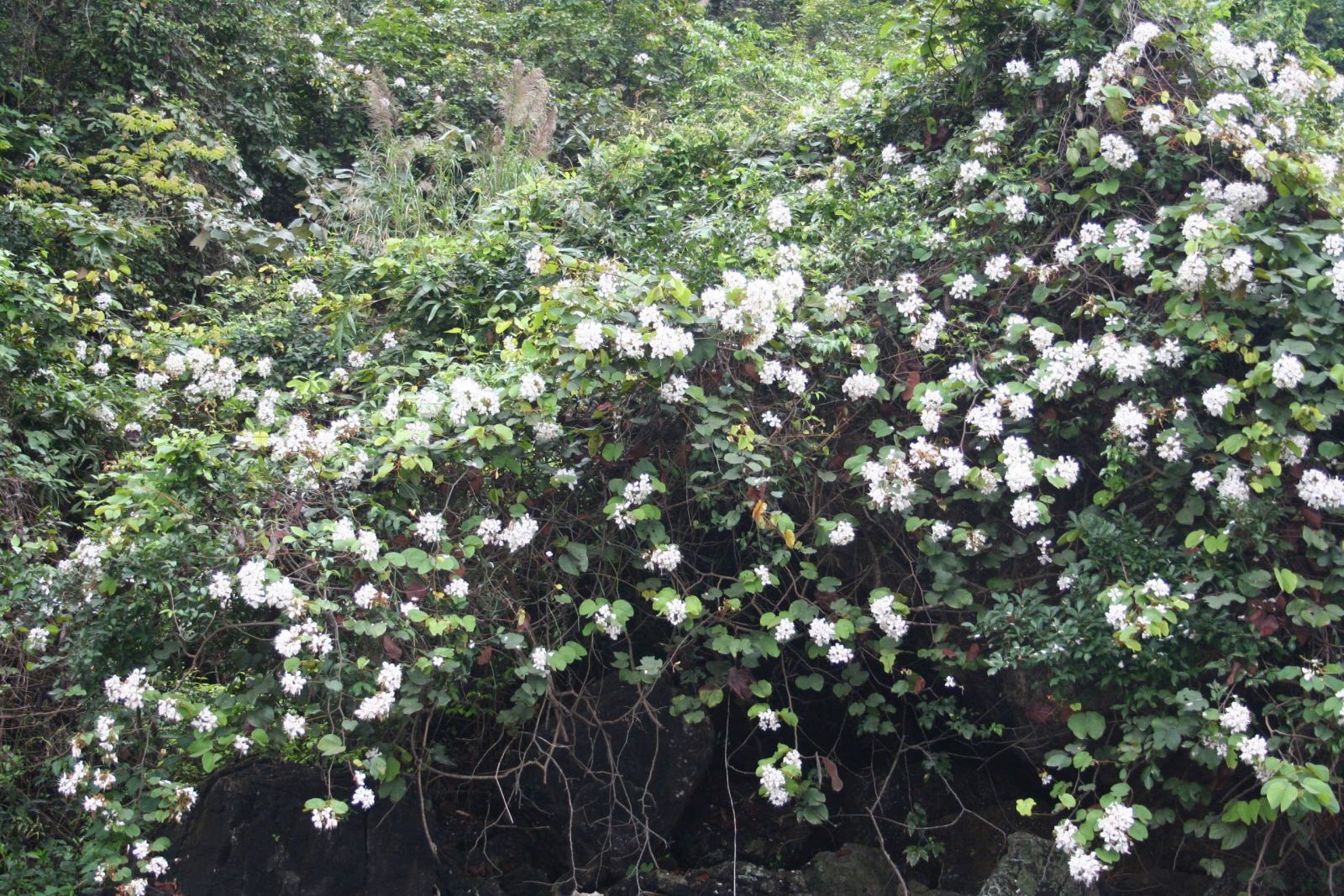 | 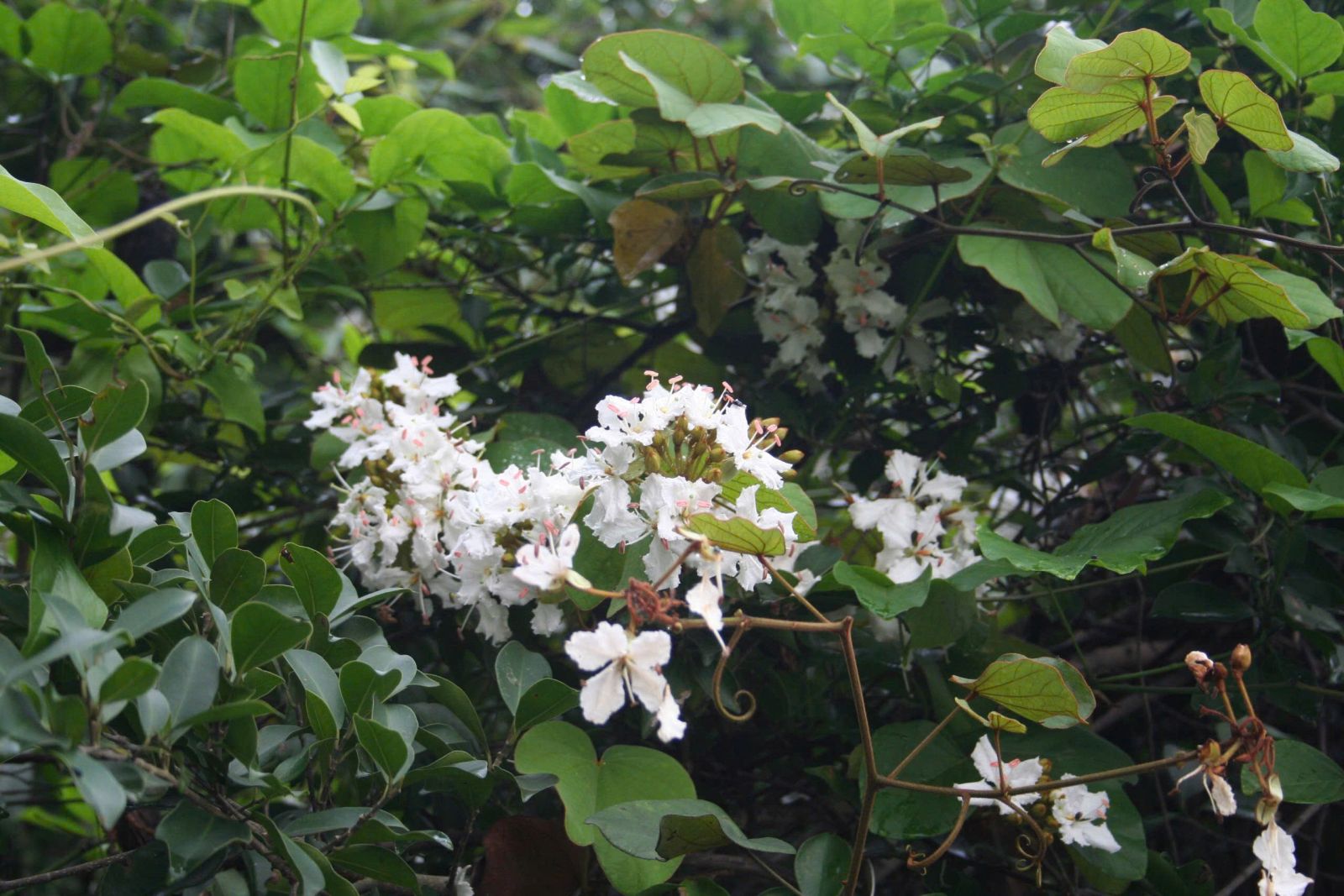 |
The Móng bò thơm flowers bloom abundantly from January to April each year on Ha Long Bay, releasing a distinctive fragrance. The fruit is dry, earth-yellow in color, and oval-shaped, covered with fine hairs. When ripe, the fruit splits along a vertical seam into two pieces, each containing 3-4 seeds inside. The fruiting season lasts from April to June.
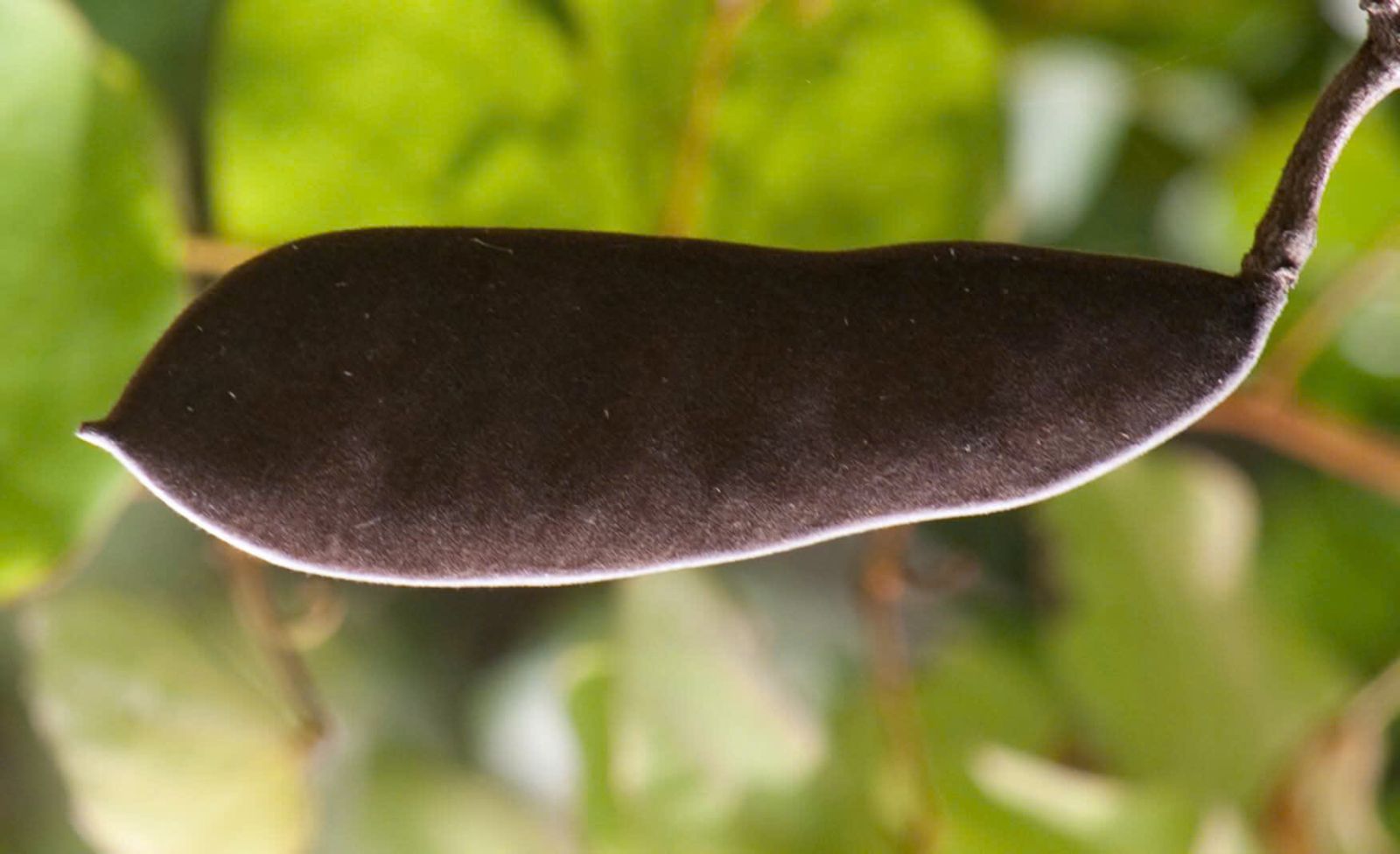 | 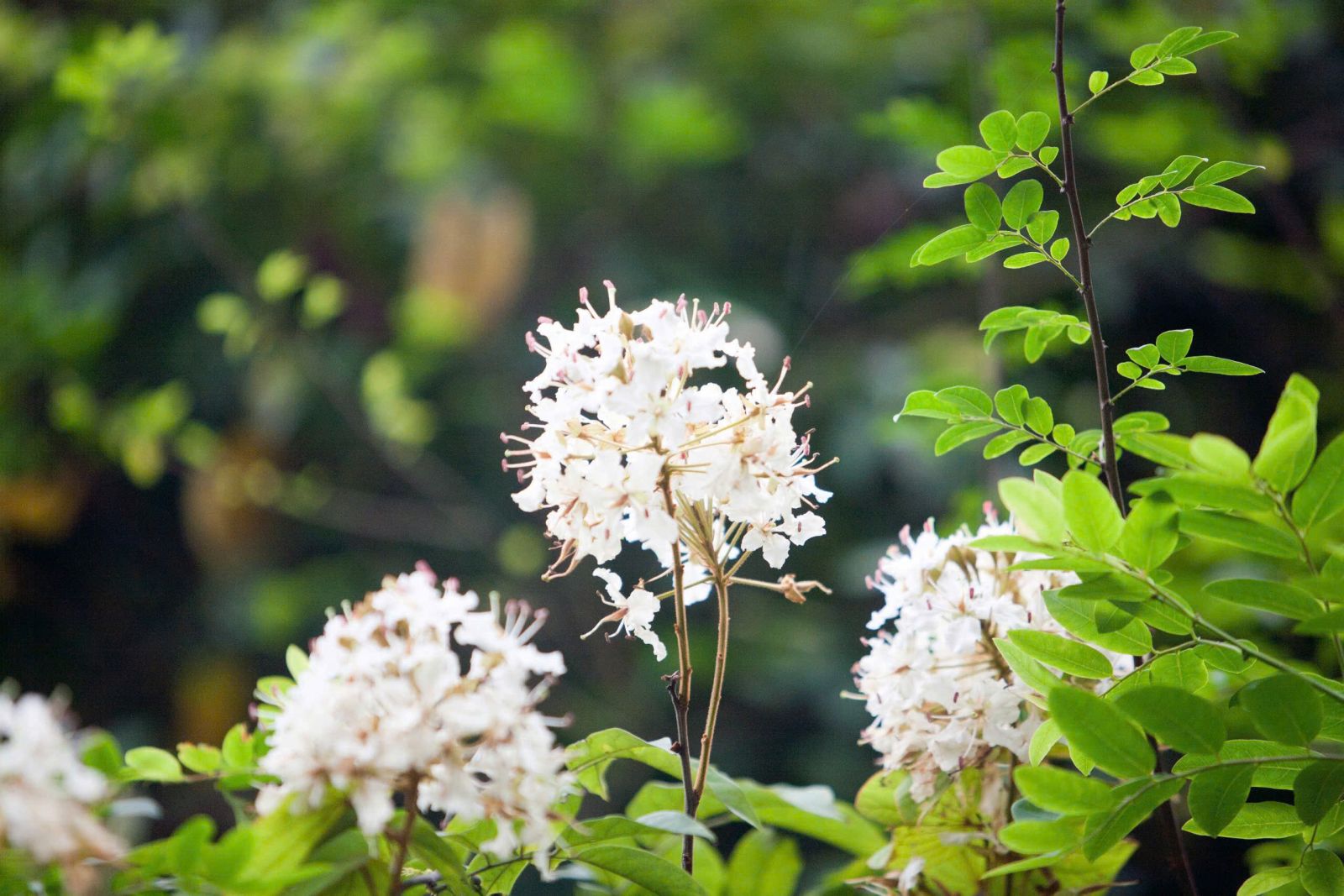 |
On the slopes of the gray limestone islands, clusters of Móng bò thơm flowers bloom in full, emitting a gentle, sweet fragrance. In some areas, the flowers bloom in large white patches across the mountain slopes, capturing the attention of anyone passing by. It’s hard not to stop and admire the beauty, breathing in the delicate scent, and many visitors take the opportunity to snap a photo with the pristine white flowers. This is a flower that not everyone gets the chance to see unless they visit Ha Long Bay.
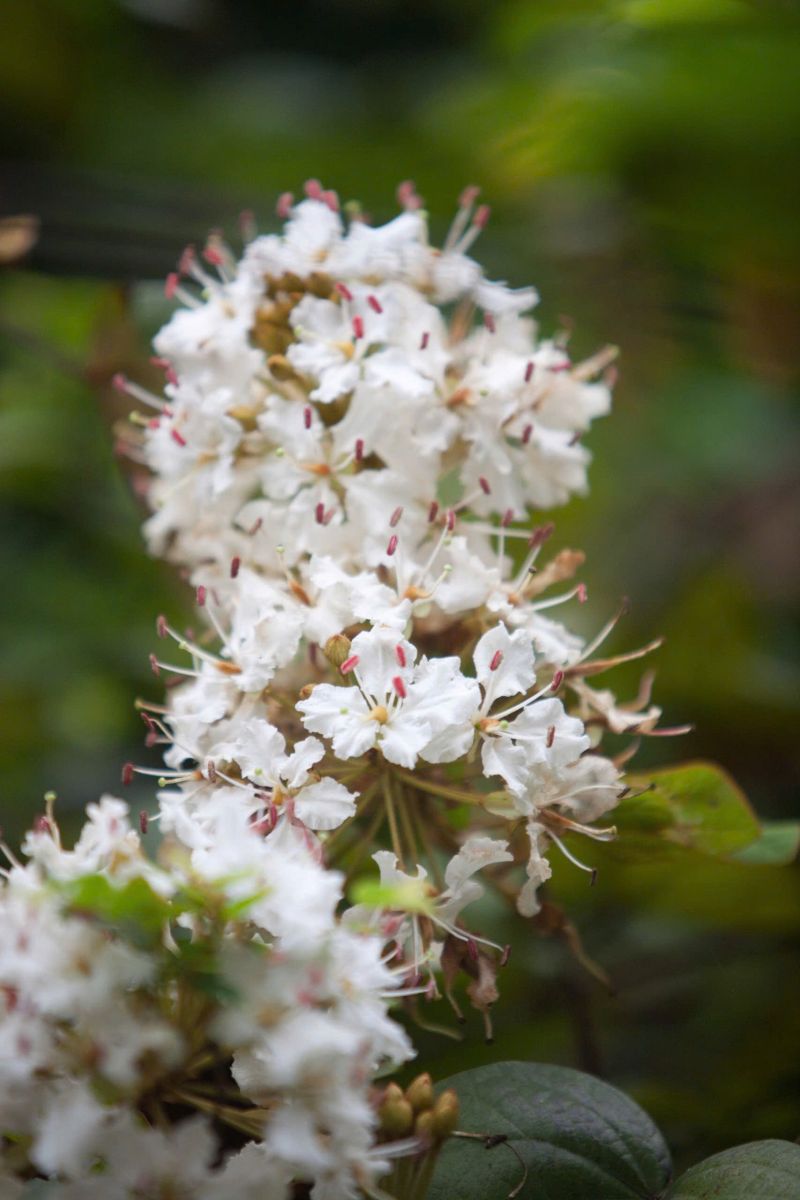
With its unique green leaves, the Móng bò tree not only creates a green space and fresh air for the Ha Long Bay area but also serves as a natural remedy for the local fishermen. They use the leaves to treat snake bites when they venture into the forest. The Móng bò plant has antibacterial properties, helping to heal skin ulcers. By crushing the leaves and applying them to wounds, it can promote faster healing. Additionally, the leaves are used in traditional medicine to support digestion, treat diabetes, and alleviate joint and bone pain for the fishermen living on the Bay in the past.
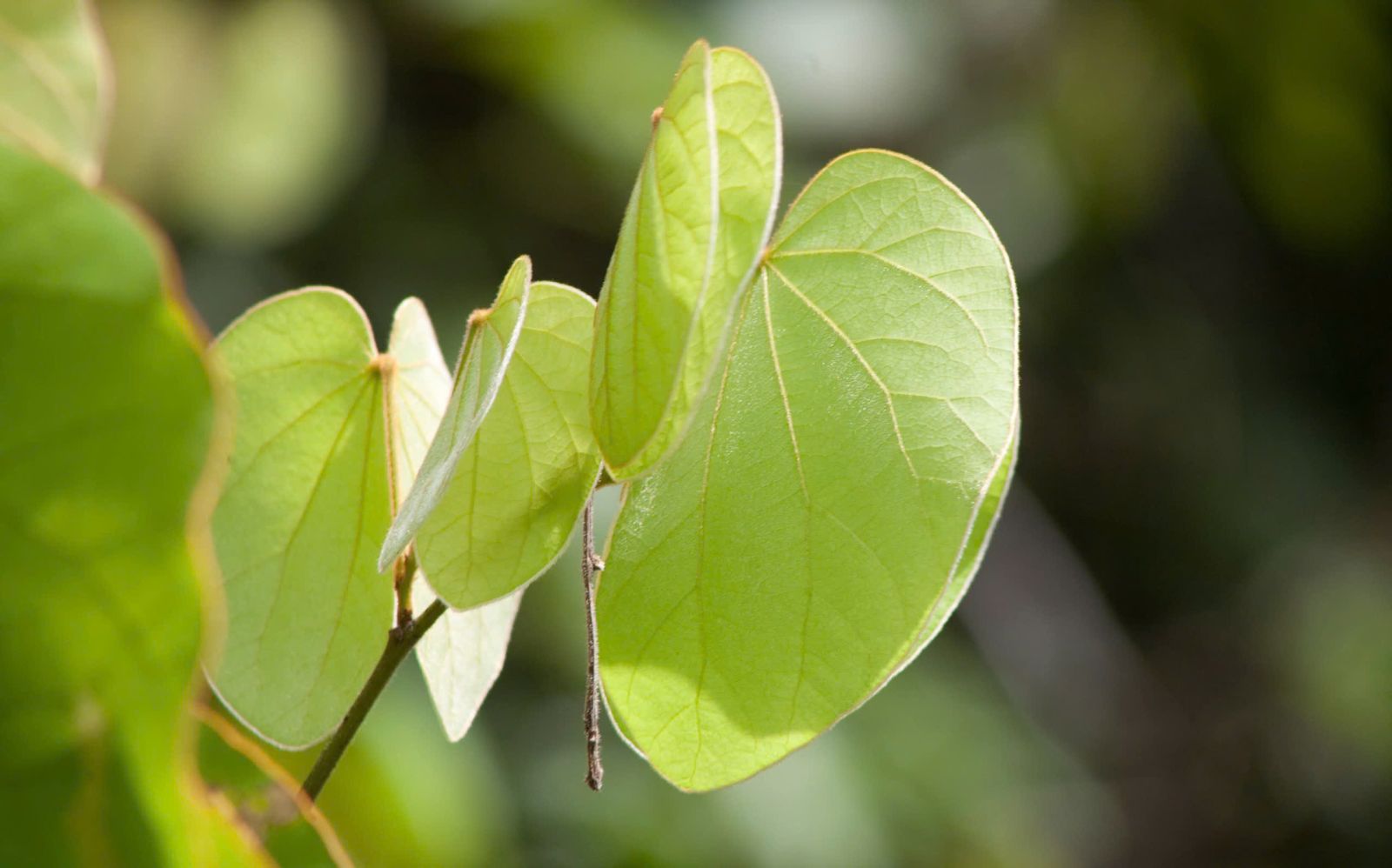
Although Móng bò thơm is not one of the 21 endemic plant species on Ha Long Bay, it is still a valuable species that contributes to the richness of local herbal remedies and enhances the enchanting, dreamy landscape of the bay.
If you want to witness the Móng bò thơm tree in person, come to Ha Long Bay and experience it for yourself!
And if you'd like to capture beautiful photos of the Móng bò thơm flowers and inhale the gentle fragrance of this humble flower, take a sightseeing boat trip from January through the summer months each year with a local guide.
Ha Long Bay, Móng bò thơm, and the local guide will surely leave you with unforgettable memories! So, why do you have to wait? Book your ticket and hop on a boat to explore Ha Long Bay – a true heritage site!
Translated by Thuy Ha
